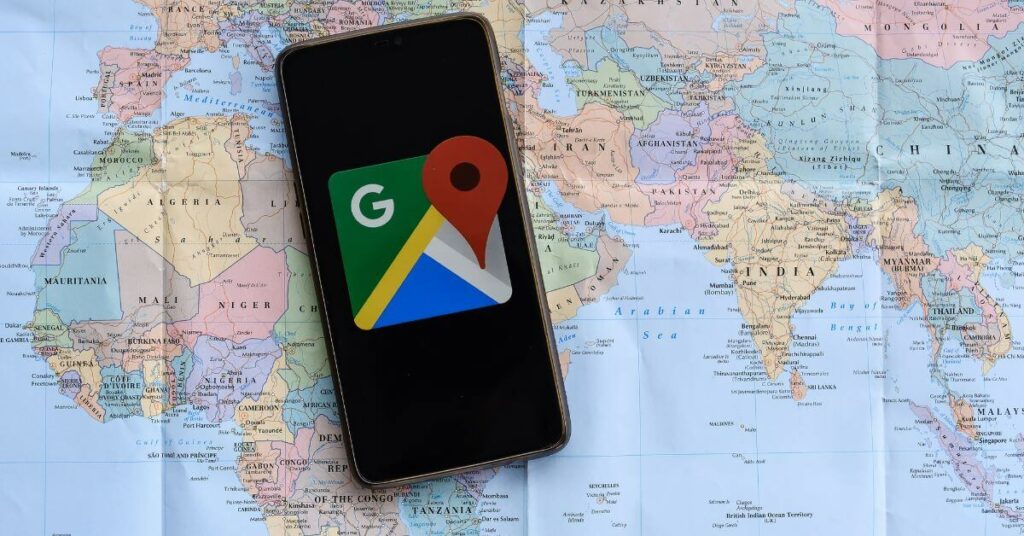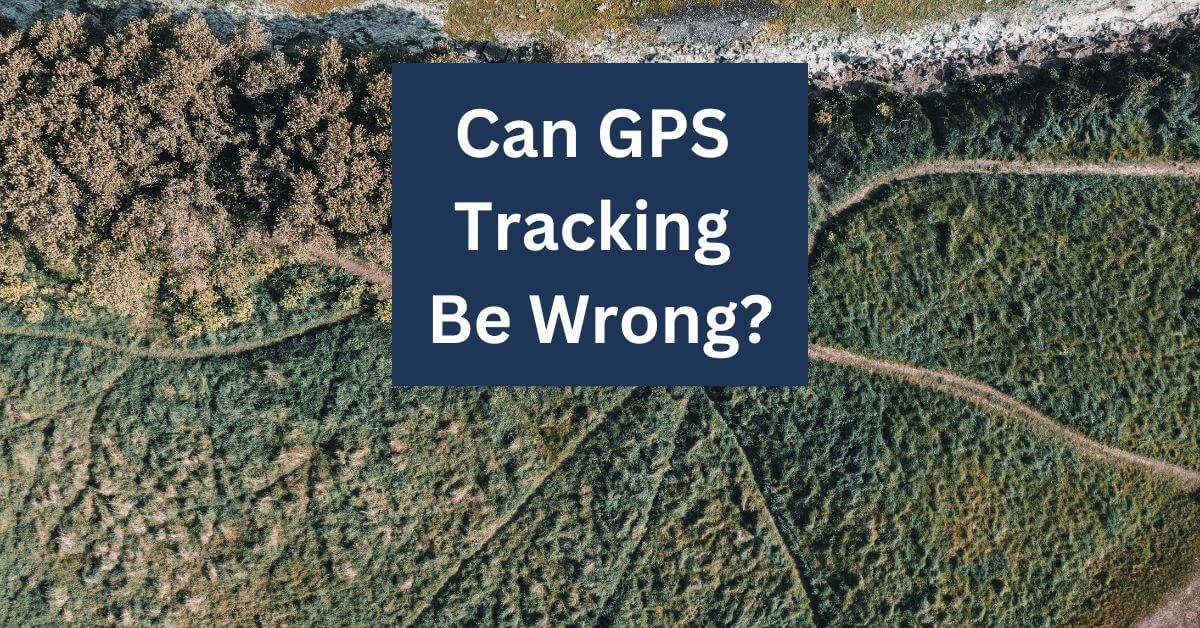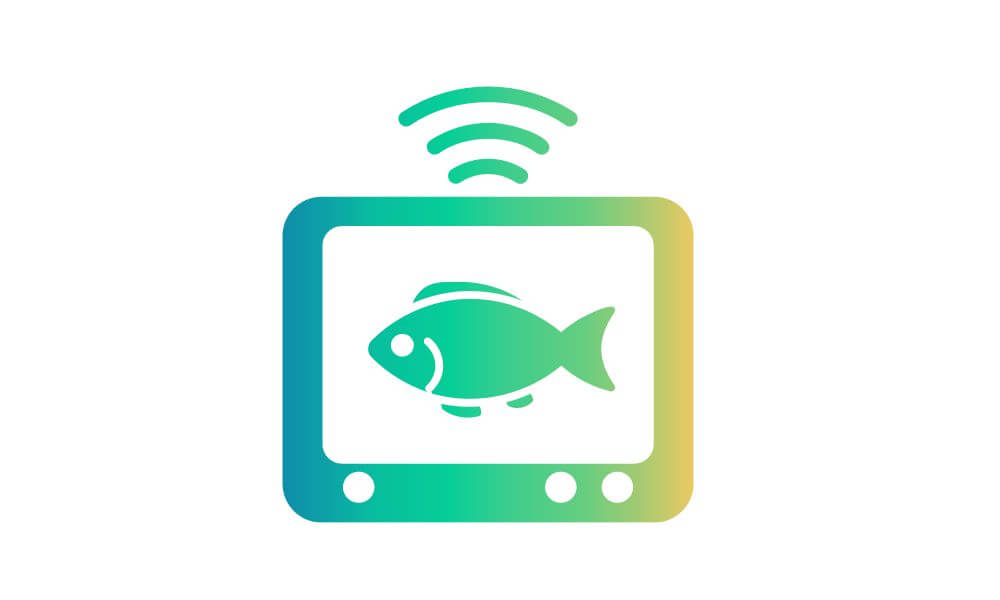Today GPS seems to be everything everywhere all at once (see what I did there?)! GPS tracking has in a relatively short space of time, become an integral part of our daily lives. We use it for navigation, we use it for tracking our fitness activities and it’s even used on large farms. However, have you ever wondered can GPS tracking be wrong?
Well, the short answer is yes, GPS tracking can be inaccurate and this may be several different reasons for this.
Shall we jump right in and take a look at some of the reasons for issues with location accuracy?
These Satellites Are Everywhere
GPS tracking devices use satellites to determine their location. These satellites send signals to your GPS device, which then uses these to calculate its location. The receiver bases this on the time it takes for the signal to reach the device from the satellite in space.
There are, however, potentially several factors that can affect the accuracy of GPS tracking. Theses reasons may include the some of the following:
- Environmental conditions
- Atmospheric conditions
- Hardware and Software issues
- Signal obstruction.
Some of these reasons, we’ve discussed previously in our article on what can affect GPS signals. Please feel free to go and check it out – just make sure to come back when you’ve finished!
Today, however, we want to specifically look at whether or not your GPS tracking can be wrong?
GPS tracking technology has undoubtedly come a long way, what it is not, however, is technology that’s 100% foolproof. In this article, we will explore the various factors that can cause GPS tracking to be inaccurate and provide tips on how to improve the accuracy of your GPS tracking device.
How does GPS Tracking Work?
We know that GPS tracking devices work by communicating with a network of satellites orbiting the Earth. These satellites transmit signals that are picked up by the GPS receiver, which then calculates its location based on the time it takes for the signal to reach the device from each satellite.
Once the GPS device has an accurate position, it can then transmit that information to a central server using cellular or satellite networks. This allows the device’s location to be tracked in real-time, giving users an accurate picture of where the device is at any given moment.
A good example would be when using Google Maps. If you’re walking to your destination using google maps on your phone, then you’ll know that you’re the blue dot. This blue dot will move along on the screen map as you travel.
The Blue Dot and the Pub
I remember making arrangements to meet a friend of mine a few years back. We hadn’t seen each other for a number of months and we happened to be in a city neither one of us knew particularly well. We made arrangements to meet in a popular bar that was located near to the metro station.
As is the norm these days, if you’re looking for a bar or a restaurant you use Google Maps to get there. It worked a treat for me and before long I was sat at the bar drinking an ice cold beer. Nothing wrong with that you may say, however, I was on my own for another couple of beers.
This was highly unusual for my buddy. He is without a doubt one of the most punctual guys I know. He grew up in a household that ingrained in him that it was deemed rude to be late for anything ever. Yup, he’s a guy who was never late.
But, in this instance he was late. So I was worried.

I rang him and he said he was on his way, but our rendezvous appeared to be located way further than he had anticipated. He assured me that he was following the dot on his screen and hopefully he’d be there in a few minutes.
It was only after I’d ordered my next beer that I realised HE WAS THE BLUE DOT!!!! 😉
I decided to put him out of his misery and ring him back. Thankfully, we did have a few beers, however, we’ve never let him live it down. What was the upshot of all this? Well, let’s just say that somebody is pretty much guaranteed to bring it up whenever there’s a night out being planned!
Can GPS Tracking Be Wrong?
While GPS tracking is in the main pretty damn accurate, however, there are a number of factors that can cause issues and make it a little less precise. One common issue is signal obstruction. This can be prevalent in areas where there are tall buildings, dense trees, or other obstacles, the GPS signal may be blocked or weakened, leading to inaccurate location data.
Another issue that can affect GPS accuracy is interference from other electronic devices. This can include things like radio transmissions, power lines, and even other GPS devices. When multiple GPS devices are in close proximity to each other, they can interfere with each other’s signals, leading to errors in location data.
There have been a number of high-profile cases where GPS tracking has led people astray, leading to some potentially serious consequences. There have been instances where a GPS tracking system used by police in the UK was found to be inaccurate and it led to some wrongful arrests of tagged individuals.
In another similar case, a GPS tracking device used to monitor a sex offender in the US malfunctioned, leading to the offender being wrongly accused of violating his parole.
Perhaps, even more alarmingly, some research carried out in California a few years back, found that there were some serious issues with GPS monitoring devices.
While these cases are relatively rare, they highlight the importance of understanding the limitations of GPS tracking technology and taking steps to ensure that it is used correctly and responsibly.
Factors that Affect GPS Accuracy
GPS tracking technology has come a long way, but, like most things, no matter how good they are it’s not perfect. There are several potential reasons for GPS tracking to be inaccurate:
| Factor | Description |
|---|---|
| Environmental Conditions | GPS signals can be blocked or weakened by tall buildings, trees (dense forest), and other natural and man-made structures. GPS signals can also be affected to some extent, by weather conditions such as heavy rain, snow, and fog. |
| Hardware and Software Issues | GPS devices may malfunction due to hardware and software issues. For instance, a GPS device may have a weak or broken antenna that affects its accuracy. |
| Atmospheric Conditions | GPS signals can be distorted by the ionosphere and troposphere, which can cause errors in tracking. This is more common when climbing at high altitudes and particularly, in polar regions. |
In what has become a rather well known incident (certainly among the drone flying communities) back in 2015, a GPS tracking error caused a drone to crash into the White House. It transpired that the drone operator lost control as there was a glitch in the main software and this caused the GPS to malfunction. Needless to say it caused a bit of a security issue for the White House!
In 2013, a GPS tracking error was found to have caused a truck driver to drive off a bridge in Indiana. Truck drivers have also got themselves stuck underneath bridges as we saw when we discussed GPS navigation problems previously.
Critics will rightly point out that the drivers in question should have been looking at what’s common up on the road ahead. No driver should use the GPS solely as their eyes and ears for the journey ahead.
It’s probably no great surprise, that our view is that the driver of any vehicle should always prioritise what’s on the road ahead of them. The GPS should only be viewed as a tool, a navigating co-driver that gently tells you the right way. It should make your life a little easier but should never replace a common sense approach.
Instances Where GPS Tracking Can Be Wrong
GPS tracking is generally a reliable technology, however, there are instances where it can go wrong. This can lead to some skewed location and some of the reasons are as follows:
- Urban Canyons: GPS signals can be blocked or reflected by tall buildings, causing the receiver to lose track of the location or provide inaccurate results. And rather unsurprisingly, this is known as the urban canyon effect!
- Heavy Cloud Cover: GPS signals can be weakened or blocked by heavy cloud cover, leading to inaccurate results.
- Interference: GPS signals can be interfered with by other electronic devices or radio signals, leading to some potentially inaccurate results.
- Obstruction: GPS signals can be obstructed by natural or man-made objects such as trees, mountains, tunnels, or bridges, leading to location finding issues.
And in case you need them, here are some additional examples of GPS tracking gone wrong:
| Date | Location | Issue | Source |
|---|---|---|---|
| 2012 – 2014 | UK | Between April 2012 and September 2014, there were 66 safety incidents related to the gadgets and nine were blamed on out-of-date systems. | Daily Mirror (UK) |
| 2018 | San Francisco, USA | Uber driver crashes into building due to GPS error | New York Post |
| 2008 | Poland | Driver follows GPS directions into a lake | ABC News |
I realise that we are highlighting various mishaps with the technology, however, it’s probably important to note that while GPS tracking can be wrong, it is still a pretty reliable technology. It’s something that has transformed the way we navigate and find our way around the globe.
By understanding the limitations of GPS tracking and where it could go wrong, we can use it effectively and avoid potential issues.
Ways to Improve GPS Accuracy
How should you minimize the potential for GPS inaccuracies? Here are a few handy points to consider:
1. Check Your Phone’s Settings
Make sure your phone’s GPS settings are optimized for accuracy. In the menu settings of my phone I need to move the device in a figure of eight (like flying a child’s airplane) in order to recalibrate the location settings. Yes, you might look a bit strange, however, it really does seem to improve the accuracy of your location.
There are smartphones out there that have a high accuracy mode. They can use both GPS and Wi-Fi signals to determine your exact location. Finally, you can also make sure to turn on location services for specific apps to improve accuracy when using those applications.
2. Update Your Maps & Devices
Outdated maps can lead to inaccurate GPS tracking. Make sure your maps are up to date by connecting your device to your online account and regularly checking for any new updates. Most GPS tracking apps should update automatically, however, you may need to be certain that this feature is turned on within your settings.
3. Use a GPS Booster
This is probably not the most practical suggestion, however, if you’re in an area with poor GPS signal, a GPS booster can most certainly help improve your accuracy. These devices amplify the GPS signal strength, making it easier for your phone to pick up the stronger signal strength.
4. Avoid Obstacles
This is a practical suggestion that you can use when out and about. Tall buildings, bridges, trees, and other higher obstacles can all interfere with the quality of the GPS signals received. If possible, move to an open area to get a better GPS signal.
Good To Know: GPS devices work best when they have a clear line of view to the sky.

While GPS tracking is a powerful and useful tool, it’s important to remember that it’s not always perfect. As we’ve seen there have been cases where GPS tracking has gone wrong, and unfortunately, in some cases this can have some serious consequences. Back in 2012 an unfortunate Australian couple were stranded in the Outback for three days after following GPS directions that led them off course.
In another case, a woman in Belgium was directed by her GPS to drive directly into a river. Ok, I’m pretty sure that the Sat nav didn’t subliminally tell her to drive directly into the river, but, it does show the dangers of following the instructions of a GPS blindly. There is clearly an element of common sense that is required in these types of situations!
Hopefully, by taking some of these few steps you can mitigate any issues with the accuracy of your GPS tracking.
Conclusion
We can all probably agree that GPS tracking is a useful technology. It has pretty much revolutionized the way we navigate the globe and go about our daily lives. It’s not, however, infallible and it can sometimes be prone to some unintentional errors.
We’ve also seen how some of these different factors can cause issues with GPS tracking and we’ve also looked at some steps that can potentially provide a solution to these errors.
On the one hand, therefore, it’s important to be aware of both the potential of GPS technology; whilst on the other hand to recognise the potential limitations of GPS tracking. At the end of the day, it’s a responsibility for us all, particularly if we rely heavily on GPS, to ensure that we take all possible steps in order to to ensure accuracy.



